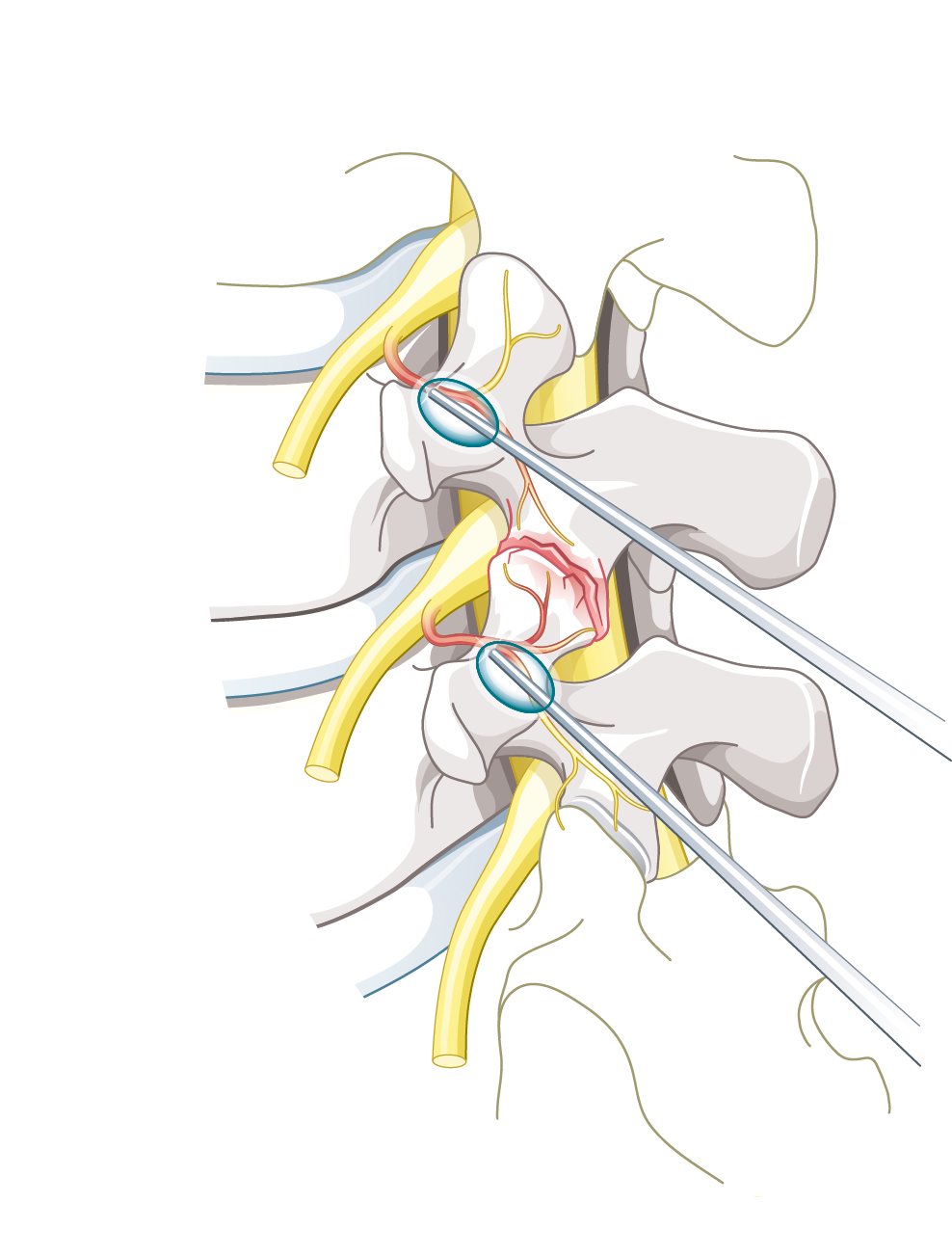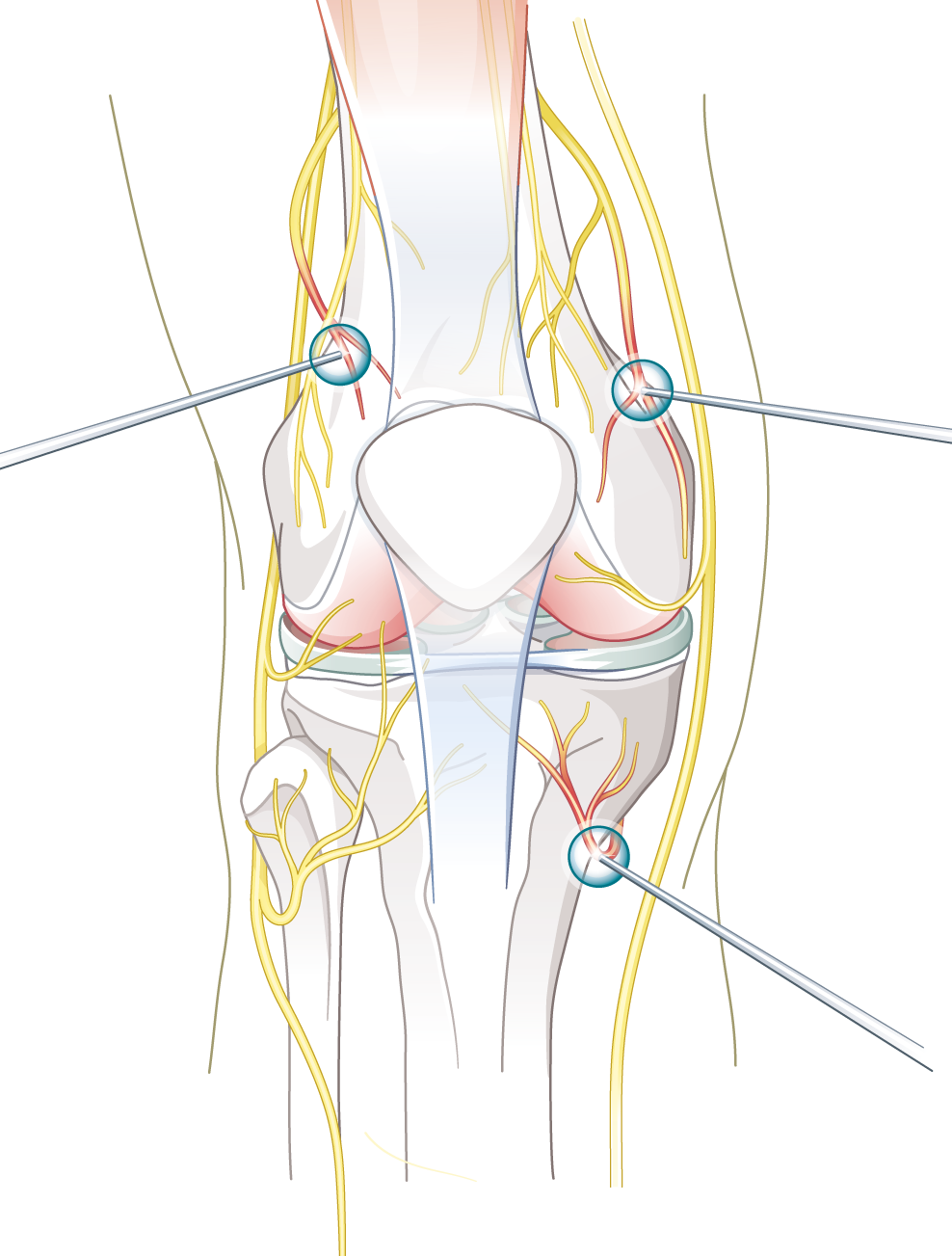Radiofrequency neurotomy (RF)
Radiofrequency neurotomy is a minimally invasive procedure using heat to burn (ablate) painful nerves causing chronic pain. Under local anesthesia a specially designed needle is placed at the target nerve, heating the needle tip via electrical radiofrequency to 80 degrees Celsius and thus altering the nerve tissue structurally (Wallerian Degeneration).
As a consequence the nerve can no longer transmit pain signals for a certain period of time, mostly at least one year. After that time period the procedure can be repeated if needed.
Radiofrequency neurotomy is applied to chronic pain symptoms, when the original pain source cannot be eliminated.
Probably the most common indications for radiofrequency neurotomy are painful joints at the spinal level (facet joints, see picture 1).
Other common painful conditions that respond to radiofrequency neurotomy are iliosacral-, hip- or knee- joint pain (see picture 2)

Abbildung 1

Abbildung 2
Radiofrequency neurotomy performed at a nerve plexus/ganglion (sympathetic nerve blockade)
Chronic pain, especially neuropathic and neuroplastic type of pain is often associated with a hyperreactivity of the autonomic sympathetic nervous system.
Signs of this «sympathetically sustained pain» are changes in body temperature and skin consistency, edema, and sensitivity. These symptoms can vary from patient to patient.
Sometimes repetitive infiltrations of the nerve plexus with a local anaesthetic can lead to a drastic and long-term pain reduction.
However, in case local infiltration is only temporary, long-term interruption of pain propagation is needed. In which case radiofrequency neurotomy (or alcohol ablation) targeted to one or two points can interrupt the painful nerve signaling.
Pulsed radiofrequency therapy as an alternative to RF-neurotomy
Pulsed radiofrequency – a less aggressive procedure – can be an alternative to thermal ablation in certain situations.
The relatively low electrical current at the tip of the needle causes reduced heat at the targeted area – only about 42 degrees Celsius. Thus, pain propagation can be curtailed without changing the nerve structurally.
This less aggressive procedure can be compared to a technique called neuromodulation and can only applied effectively to specific regions/nerves of the body.